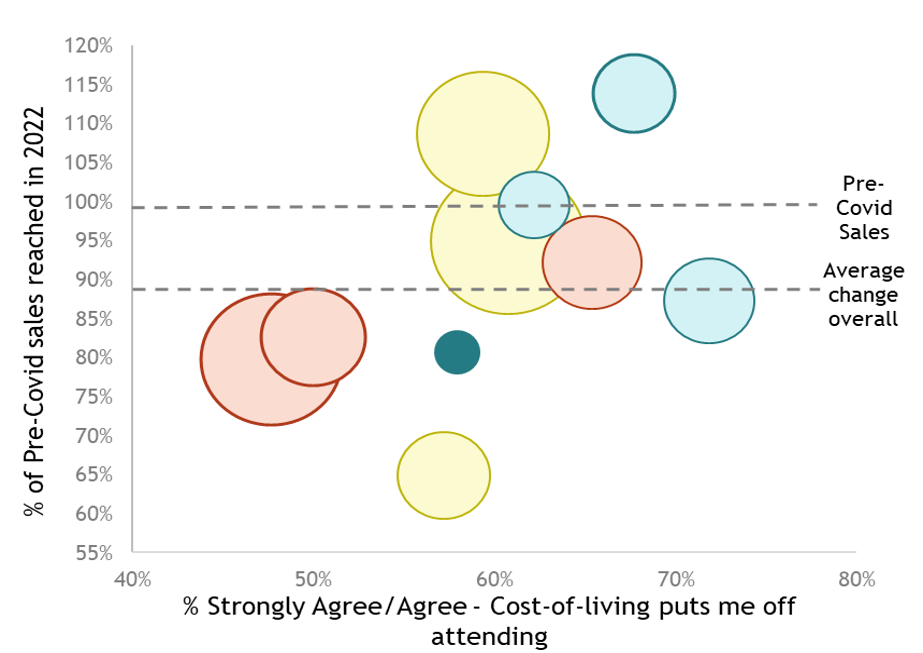Back to Supported Communities overview
Supported Communities Attitudes
In this section
Priorities
Many were once more interested in arts and culture but now consider health and disability to be overwhelming physical inhibitors to engaging, but they do value opportunities to socialise when they are thoughtfully provisioned.
- As the lowest engaged group, their tendency to think the arts are less important for them than they once were is likely to be the result of low accessibility, so awareness of access needs (e.g. provision of captioning, signing, audio-description, hearing loops) are particularly important.
- For many in this group poor health and accessibility issues contribute particularly to them not visiting heritage sites, and the same reasons prevail for museums and arts.
- Providing accessible spaces and valued opportunities to socialise with like-minded peers, based around cultural activities, may be one of the best ways to build relationships with this group, either by enabling travel to venues or by taking such opportunities to their home or community.
- The opportunity arts and cultural events provide for social interaction is perhaps one of the most important motivations or attraction for many who lead isolated or confined lives.
- All of that said, there is also a significant proportion who believe that the arts are simply not for them and are unlikely to be persuaded otherwise.
Spending
Disposable income is not a luxury that this group enjoys, so, while discount strategies may sometimes be effective, free opportunities are where they will feel most welcomed.
- As the vast majority don't work or are retired, while others are students, all living on very low incomes, cost is a huge barrier to all cohorts of this group.
- Discount pricing may be effective as part of the broader tailored marketing mix for this group, whose income levels are low enough to make price an important factor in the decision whether to engage or not.
- But free activities are what really allow this group to engage.
Philanthropy
As a low income group, they are neither able nor inclined to make donations to arts and culture, but are affectionate towards some other charitable causes.
- Limited financial means dictate that this group is not likely to provide a rich source of donations to the arts and cultural sector, and they are in fact the least likely segment to do so.
- With limited incomes, the very small minority that do give to the arts are only able to afford infrequent donations of less than £20.
- The most successful strategies will be targeted at encouraging infrequent low level or one off giving within modest targets.
- Outside the arts, donations and philanthropic interests tend to be related to charities working with the elderly or with animals.
Cost-of-living concerns

Supported Communities attendance has not bounced back post-Covid-19 and, whilst they are not among the most put off engaging with arts and culture by the cost-of-living crisis, this likely reflects their generally low levels of interest and participation.
This group have the highest level of agreement with all cost of living factors impacting their spending, with 40% strongly agreeing with energy costs affecting cultural spend. Inflation rate concerns are similarly high, whilst interest rates are less of a worry. For a group already with lower engagement, these concerns may mean an even greater focus on free events only.
